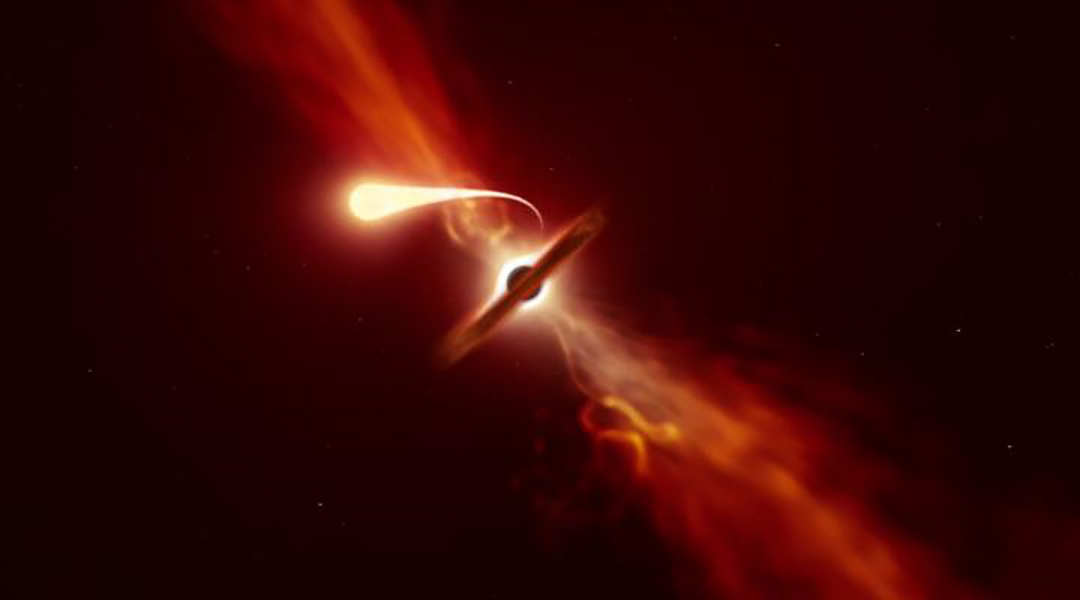A star experiencing spaghettification as it’s sucked in by a supermassive black hole. Image credit: ESO/M. Kornmesser
Coming off their recent Nobel win, black holes are making the news again as astronomers capture a rare phenomenon in which a star is ripped apart by a supermassive black hole, formally referred to as a tidal disruption event. “The idea of a black hole ‘sucking in’ a nearby star sounds like science fiction. But this is exactly what happens in a tidal disruption event,” says Matt Nicholl, a lecturer and Royal Astronomical Society research fellow at the University of Birmingham, UK, and the lead author of the new study.
When a star wanders too close to a black hole it is pulled apart and experiences what astronomers call “spaghetification”. This highly technical term refers to the shredding of the star into thin streams of material caused by the extreme gravitational pull of the black hole. Astronomers can detect bright flares of energy that get released as the spaghetti stellar strands fall into the abyss.
What’s exciting is that the event detected in the current study is the closest recorded to date, at just over 215 million light-years from Earth, and as a result, has been studied in unprecedented detail. “Several sky surveys discovered emission from the new tidal disruption event very quickly after the star was ripped apart,” said study author Thomas Wevers, an ESO Fellow in Santiago, Chile, who was at the Institute of Astronomy, University of Cambridge, UK, when he conducted the work. “We immediately pointed a suite of ground-based and space telescopes in that direction to see how the light was produced.”
Up to now, astronomers have had difficulty in determining the origin of these bursts of light, which are often obscured by dust and debris; but now it seems the two are actually linked.
“We found that when a black hole devours a star, it can launch a powerful blast of material outwards that obstructs our view,” explains Samantha Oates, also at the University of Birmingham. This happens because the energy released as the black hole eats up stellar material propels the star’s debris outwards.
“Because we caught it early, we could actually see the curtain of dust and debris being drawn up as the black hole launched a powerful outflow of material with velocities up to 10 000 km/s,” says Kate Alexander, NASA Einstein Fellow at Northwestern University in the US. “This unique ‘peek behind the curtain’ provided the first opportunity to pinpoint the origin of the obscuring material and follow in real time how it engulfs the black hole.”
The prompt and extensive observations made at multiple locations have, for the first time, made a direct connection between the material flowing out from the star and the bright flare emitted as it is devoured by the black hole. “The observations showed that the star had roughly the same mass as our own Sun, and that it lost about half of that to the monster black hole, which is over a million times more massive,” says Nicholl, who is also a visiting researcher at the University of Edinburgh.
The research helps us better understand supermassive black holes and how matter behaves in the extreme gravity environments around them. The team say AT2019qiz could even act as a ‘Rosetta stone’ for interpreting future observations of tidal disruption events. ESO’s Extremely Large Telescope (ELT), planned to start operating this decade, will enable researchers to detect increasingly fainter and faster evolving tidal disruption events, to solve further mysteries of black hole physics.

















